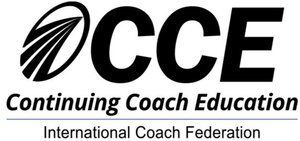How to Reconnect and Rekindle Romance with Your Partner

I often hear my clients saying how they caught up with an old friend they hadn’t talked to in years and it was like “no time had passed”. I have experienced the same and it amazes me how the beauty of old friendships can be preserved over time.
I have reflected on this time of Covid-19, and how this pandemic is impacting the community and in particular, couples. It strikes me that many of my marriage counselling clients, prior to Covid-19, would describe their partner with a melancholic meandering, as the old friend they once had, who is now more like a stranger or even antagonist at times. They feel alone in the marriage and household, struggling with time management and work life balance and the majority complain about the lack of time with their kids or spouse, or more importantly their self. Then came Covid-19 and suddenly the Universe granted everyone’s wish, Right? Sadly this has caused great challenge for these partnered strangers now being housebound and “imprisoned” in the same shelter.
I believe in the art of reframe and tend to see this situation as a new opportunity for what Esther Perel calls mating in captivity. It is my deepest wish that all couple’s whether you are housebound together or apart, attempt to reframe this situation to take advantage of this rare opportunity. I know this is easier said than done and suddenly being thrust into a house with a veritable stranger is daunting, but this stranger is only a stranger because one or both let things drift. This person who you met at the pub or church or at a friend’s house party, or at work, used to ignite something in you. This person took your attention and became a priority, at least for a while, until the marriage ceremony or move in was complete. It is easy for couples to drift, especially after kids are brought into their worlds, but the majority of that original person (focus of your desire) is still intact and still there, just more shell shocked perhaps.
The good news is most relationships can be considered organic in the notion that growth comes from nurturing. If you were seeking enlightenment, you might spend more time in focused meditation or chanting mantras, if you wanted a deeper walk in your spiritual world you would spend more time in study, or deep contemplation and reverent honoring of the belief system. Why can’t we apply the same to relationships? If we allow the dynamic to become two people in a power play for the household, we can imagine where that will end up. This is especially the case, if one has been typically running the show already. So let’s step back and re-invest in the before-kids-vision of the couple’s relationship, when you could laugh and dream, and were constantly pursuing affection with the other. Trust me, the kids want this atmosphere as well.
The miscommunications, attitudes, and hurtful acts which have occurred in the ensuing years and which have created this vast divide, were just part of an unhealthy intimacy. It’s not your fault. Nobody explained how to handle the first 10 years of marriage and kids. This circuit breaker is meant to power down the old energy source. It’s meant to create a pause, and repair, then force a reboot to the system, bringing new energy and new charge!
Here are some ideas I would like all couples of Covid-19 to explore during circuit breaker:
Partner A: You were a hunter for your partner once. In that state of want and pursuit, you were incredibly creative. Remember? You were gallant and chivalrous and adventurous and expressive, and romantic and very clever when planning your seduction. Now is your chance to bring that back. If you can’t be inspired by your partner because too much drifting has taken place, then let it be an exercise towards “enlightenment”. Take the first steps without knowing what will come of it, but knowing what you want to come of it. Or do it for the pure fun of being creative, in a way that benefits your partner.
- If you are in the house together or if circuit breaker has you apart, look around the house. Be MacGyver for a moment. What furnishings, foods, toys, could help you create a spontaneous and romantic getaway, while in the same house. A staycation at home so to speak. Perhaps pick a place you have always wanted to travel to together and create it. A trip around the world can be brought to the living room through YouTube HD drone videos of most countries of the world, cuisine of any country can be made in your kitchen or ordered in. Costumes or local flair is easy to find in your closet when you really need to impress her. Additional props are strewn throughout the house from those souvenirs and trinkets you picked up and always wondered how you would use them.
Partner B, when we look at the 5 love languages the majority of the men I’ve met would say that Words of Affirmation and Physical Touch are their preferred ways of receiving love. So at least express one of these during this housebound era.
- Create an authentic way to offer affirmation. Choose three things you like about your partner and offer this observation or insight with them. Even if it’s what John Gottman calls Positivity in Conflict, find a way to praise. This is when you would say what is good about this thing you want changed. For example, “Honey, I can overhear how amazing you are with your colleagues. You are so patient and kind when you are handling challenges with them, and I can imagine how much they all respect you”. I don’t feel the same kind of kind energy from you when we face challenges recently. What do you think is interfering with us? The tone you use to deliver this has to be sincere. Try to choose a positive statement that you actually believe and deliver the conflict part of the statement in the same genuine tone, so it won’t come across as sarcasm or condescending.
- *This might seem like a passive way to seduce your partner but trust me, men have natural desires and in most cases are just trying to clear the obstacles to fulfilling that desire. If they feel undervalued or even worse, irrelevant, this is an obstacle.
For both partners, take responsibility for the relationship with this other human being. This person had dreams and hopes before meeting you. They had loving family who want the best for them. This dreamer is still alive and trying to live a life of value without getting lost in the process. Help them find their way, as you had promised once.
- Both parties can consider what lifts their spirits or builds on their resources. Make a list and see which areas match. Maybe it’s a music genre you both love, or a faith/practice (religion, yoga, meditation, etc.) you have been wanting to explore, then plan the activity together. These are all available online. Remember the things that can hurt us like sexual disconnection, value conflicts, can also be re-aligned and bring intimacy. Even financial re-visioning can bring a form of intimacy as it links directly to safety and security and shared dreaming.
- Massage is another I highly recommend especially because social physical connection is the one thing we are all craving the most at a time like this. A sensual massage conveys attraction, care, desire and is ultimately a very loving act in itself. Obviously both parties can offer this to the other. This is the most direct way of nurturing the organic love.
Remember, if we are creating safety, investing in trust building behaviors, and offering adventures in our sincere pursuit of each other, the rest should flow naturally. The suggestion above are not intended to imply you should return to your partner, as a representative from the past (the old you). It is okay that you have evolved and changed, but let this new situation bring a new conversation with an old friend. Take time to get to know this person you chose so many years ago. The ideas above are just a few ways to kickstart the new adventure. This global social distancing initiative is a beautiful and very rare opportunity to revisit and reconnect with your old friend and life partner. Move away from melancholy towards magic moments in the present, while creating new memories for the future.
Carpe Diem!
About the Author: Dr. Glenn Graves is an American psychologist who has lived and worked in Asia since 2004. The founder and director of Counseling Perspective, Glenn has nearly two decades of experience in providing counselling support to local and expatriate individuals, couples, and families in Singapore. His specialities include child counselling and trauma recovery. Read Full Bio >










